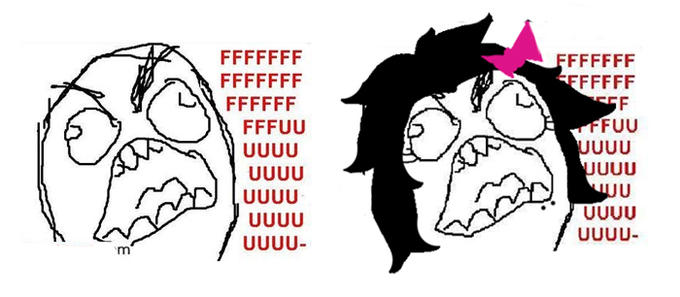Guides
What Is 'Rule 63' Of The Internet? The Internet Adage About Gender-Bent Fan Art Explained
Everyone knows about Rule 34, the internetism that promises the existence of adult material featuring your favorite (or most reviled) pop culture character, but this rule is only one of many such rules created in the internet of the 2010s, a time when forum users and early social network adopters decided to codify some of the funnier observations they made about internet culture.
Rule 63 is another popular adage in this vague ruleset, suggesting that "for every fictional character, there exists an opposite-gender counterpart."

Rule 63 has been embraced by fandom communities as a creative way to reimagine favorite characters, often leading to gender-bent versions in fan art, cosplay and even in official media.
Popular examples include gender-swapped takes on Spider-Man, in which Peter Parker has female versions like Madame Web, or internet meme staples like Derp and his female counterpart Derpina.
The "Rules of The Internet" are not a particularly strict rulebook, but over the years, Rule 63 has taken on a life of its own, becoming famous and widely referenced in various fan spaces.
Here's a brief history of the phenomenon, from what it is to how it spread online over the last several years.
What Is The Earliest Known Mention of 'Rule 63'?
While gender-bent fan art is a fandom tradition as old as popular media, it came to be called "Rule 63" only in the context of the Rules of the Internet, a humorous informal collection of guidelines and observations that emerged from early internet forums. These rules were collected from 4chan, Something Awful and numerous Wikis sometime in the 2000s.

People meant for the rules to capture the sometimes funny or absurd quirks and trends often spotted on the internet at the time, and as time went on, some rules became famous for being particularly accurate and prescient.
Rule 63 was one of them, with search interest for the term starting to spike in 2007.
How Is 'Rule 63' Utilized In Popular Media?
While "Rule 63" only got its name in the 2000s, gender-swapping has always been a popular aspect of superhero comics, even in the early days. DC Comics introduced Supergirl in 1959 as a female counterpart to Superman, giving readers a heroine with similar powers, backstory and purpose.
Marvel's Madame Web, though not a direct gender swap, emerged as an alternate interpretation of Spider-Man’s universe, providing a female figure with similar powers and backstory.


In more modern media, Rule 63 can be seen in popular series like Adventure Time, which introduced "Fionna" as a gender-swapped version of the main character Finn. Initially presented as a one-off alternate-universe story, Fionna and her cat sidekick, Cake, quickly became fan favorites, leading to the creation of their own spinoff show, Fionna and Cake.

What Are Some Examples Of Rule 63 In Meme Culture?
Rule 63 has always applied to memes, with Derp and Derpina being a classic example of this fact. The duo was the male and female archetype represented in 2010s-era Rage Comics, with Derp being a hapless male, while Derpina was just as useless, but possibly more irritating.

The tradition of gender-swapping folks continued into the 2010's Doomer and Doomer Girl. The original "Doomer" character was often depicted as a gloomy, disillusioned male Wojak, and he was soon joined by his female counterpart representing similar emotions.

For the full history of Rule 63 be sure to check out Know Your Meme's encyclopedia entry for more information.
